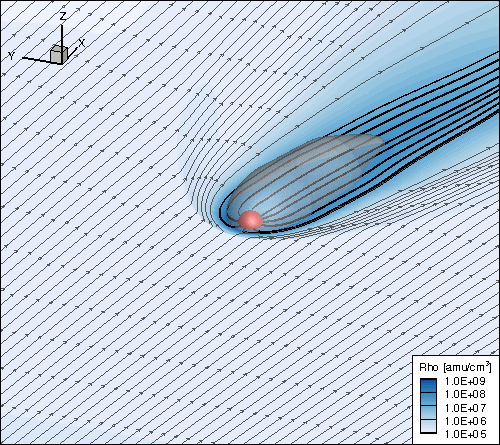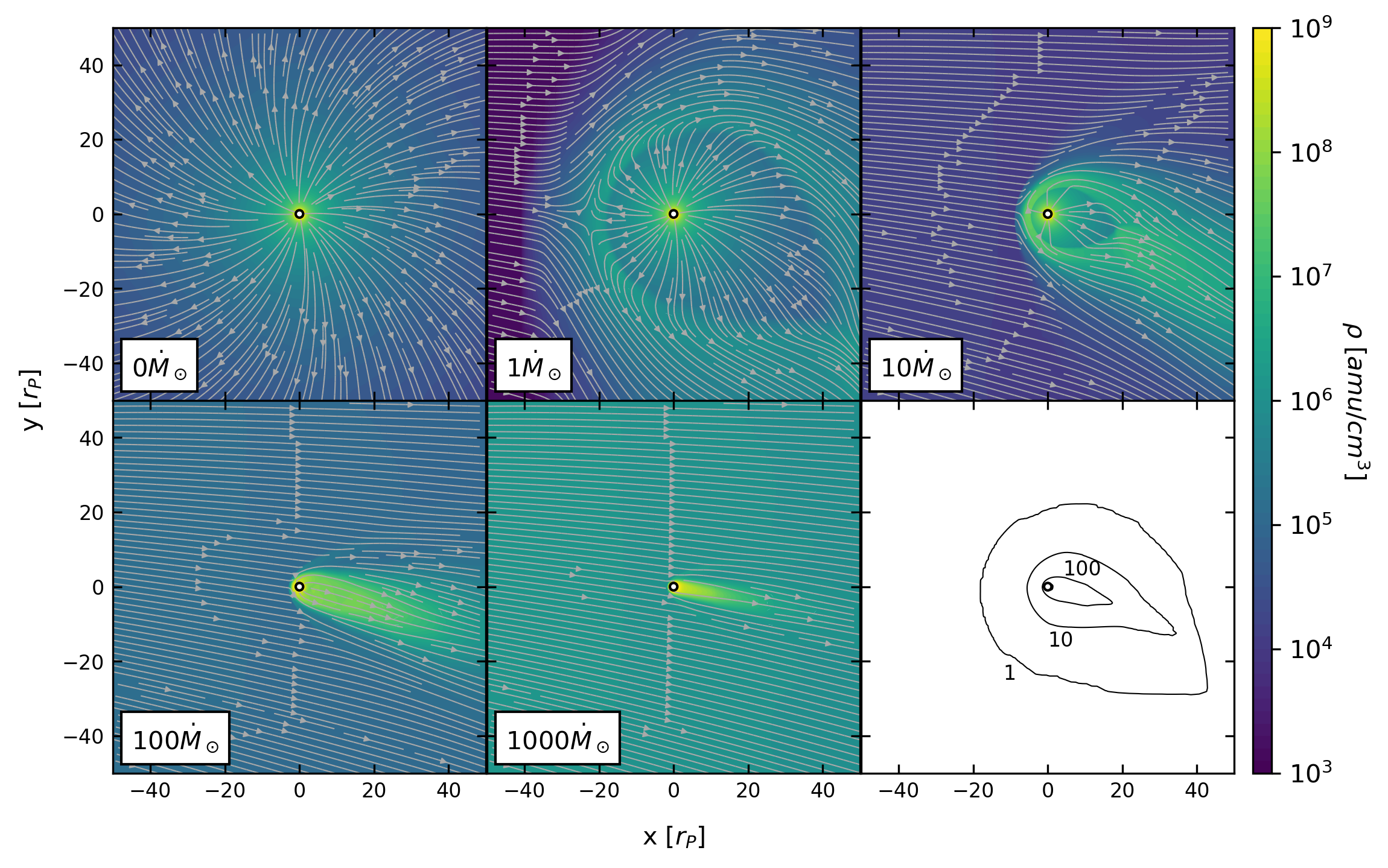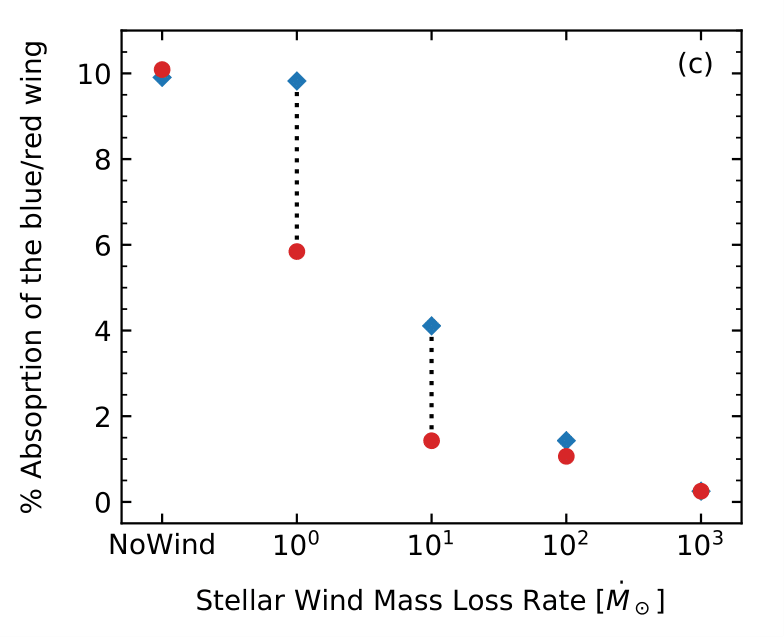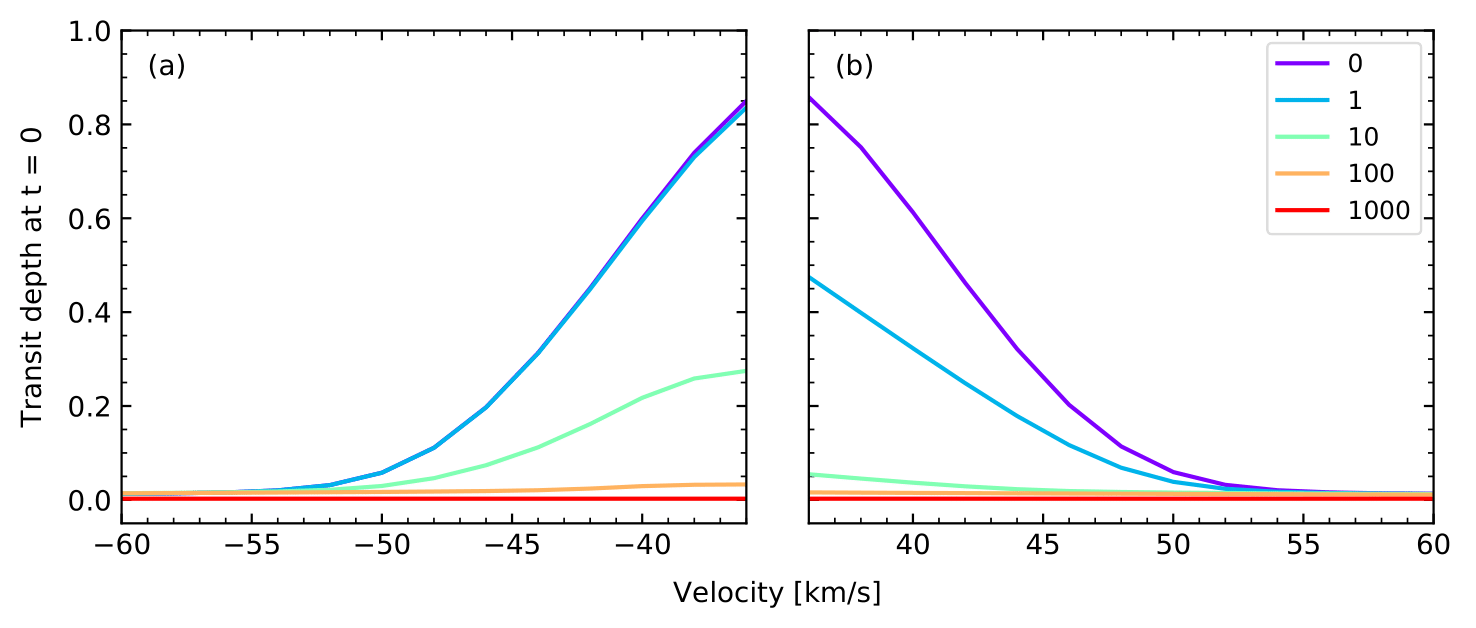The Dichotomy of Atmospheric Escape in AU Mic b
S. Carolan, A. A. Vidotto, P. Plavchan, C. Villarreal D'Angelo, G. Hazra
Background
The large high-energy flux young close-in planets receive from their host stars can lead to strong atmospheric evaporation. For these planets, their atmospheres take the form of dense photoevaporative hydrogen outflows, which expand into the winds of their host stars. The stellar wind exerts pressure in the expanding planetary atmosphere and, if sufficiently strong, it can affect planetary atmospheric escape rates and spectroscopic transit signatures.
What is special about AU Mic b?
Here, we study the dichotomy of the escaping atmosphere of the newly discovered close-in exoplanet AU Mic b. On one hand, the high EUV stellar flux is expected to cause a strong atmospheric escape in AU Mic b. On the other hand, the wind of this young star is believed to be very strong, which could reduce or even inhibit the planet's atmospheric escape. AU Mic is thought to have a wind mass-loss rate that is up to 1000 times larger than the solar wind mass-loss rate.
Modelling
3D Models of Atmospheric Escape

Figure 1: A 3D view of the planet, seen in red. The grey streamlines trace the flow of the stellar wind, while the black trace the planetary outflow. The color shows the density in the orbital plane.
- We perform 3d hydrodynamic models of AU Mic b's atmospheric escape by varying the strength of the stellar wind in each
simulation from no wind to 1000 times solar mass loss rate (Ṁ⊙).
- The output of our simulations are used to compute synthetic Ly-α transit line profiles at mid transit.
Results
Variation of Stellar Wind Strength

Figure 3: The orbital plane in each of our models. The color shows the density in the orbital plane, which the streamlines trace the flow of material. The contours in the bottom right panel outline the volume occupied by the absorbing material, corresponding to the grey surface in figure 1.
-
We perform five simulations of AU Mic b, each with a different stellar wind strength: no wind, 1, 10, 100, and 1000 Ṁ⊙.
The orbital slice from each of these can be seen in the figure above. The bottom right panel shows the region containing absorbing material. It is clear
that as the stellar wind strength is increased the absorbing material is confined closer to the planet.
- Eventually, this confinement affects the sonic surface of the outflowing atmosphere, such that material on the day-side no longer accelerates to super-sonic speeds. It is instead funneled towards the comet-like tail. This causes a reducing escape rate as the stellar wind strength is increased.
Synthetic Observations
- Given that the absorbing planetary material now occupies a smaller volume around the planet, and the atmospheric escape rate has been reduced, changes in the Ly-α absorption are to be expected. We perform synthetic Ly-α transit calculations on each of our 3D grids obtaining the Ly-α line profiles at mid transit. We ignore the line centre [-36, 36 km/s] given it will be contaminated by interstellar aborption and geocoronal emission, and plot the blue and red wings for each model below.
Figure 4: (a, b) The blue & red wings of the Ly-α line in each of our models at mid-transit. The line centre is not considered due to geocoronal emission and interstellar absorption. (c) The percentage absorption of the blue (diamonds) and red (circles) wings in each of our models.

- We integrate the red and blue wings of each Ly-α line profile, obtaining the percentage absorption of each wing. The resultant values can be seen in the figure to the left. This allows us to quantify the line asymmetry of the Ly-α line for each stellar wind strength.
For stellar winds ≤ 10 Ṁ⊙, the blue wing shows significantly more absorption than the red wing. The stellar wind funnels day-side material towards the comet-like tail, leading to asymmetry in the line profile.
For stellar winds ≥ 100 Ṁ⊙, we find no significant absorption in the blue or red wing. The stellar wind is now strong enough to confine the outflowing planetary material much closer to the planet, such that the volume occupied by the absorbing hydrogen is greatly reduced. This leads to very little Ly-α absorption.
Conclusions
-
We find that as the stellar wind strength is increased the mass loss rate of the planet decreases.
This is due to the interaction between the stellar and planetary material, which does not allow the day-side
outflow to reach super-sonic speeds when the stellar wind is strong.
-
We find that this decreased escape rate and confinement of planetary material affects the Ly-α absorption, as the absorbing
material now occupies a lower volume.
- This places further importance on follow up observations of AU Mic b in Ly-α, as they may allow for a constraint to be placed on the stellar wind mass-loss rate. Should a non-detection of the escaping atmosphere be found, this suggests that the stellar wind mass-loss rate is greater than 100 times solar. Should a blueshift dominant absorption be found, the stellar wind mass loss rate is less than this value.
Further Information
This work has been published in MNRAS letters, and can be found here.
For more on Stellar Wind Confinement, check out our paper which has been accepted for publication in MNRAS, and can be found on here.
We acknowledge funding from the European Research Council (ERC) under the European Union's Horizon 2020 research and innovation programme (grant 817540, ASTROFLOW) and SFI/HEA Irish Centre for High-End Computing (ICHEC) for the provision of computational facilities and support. This work used the BATS-R-US tools developed at the University of Michigan Center for Space Environment Modeling and made available through the NASA Community Coordinated Modeling Center.



